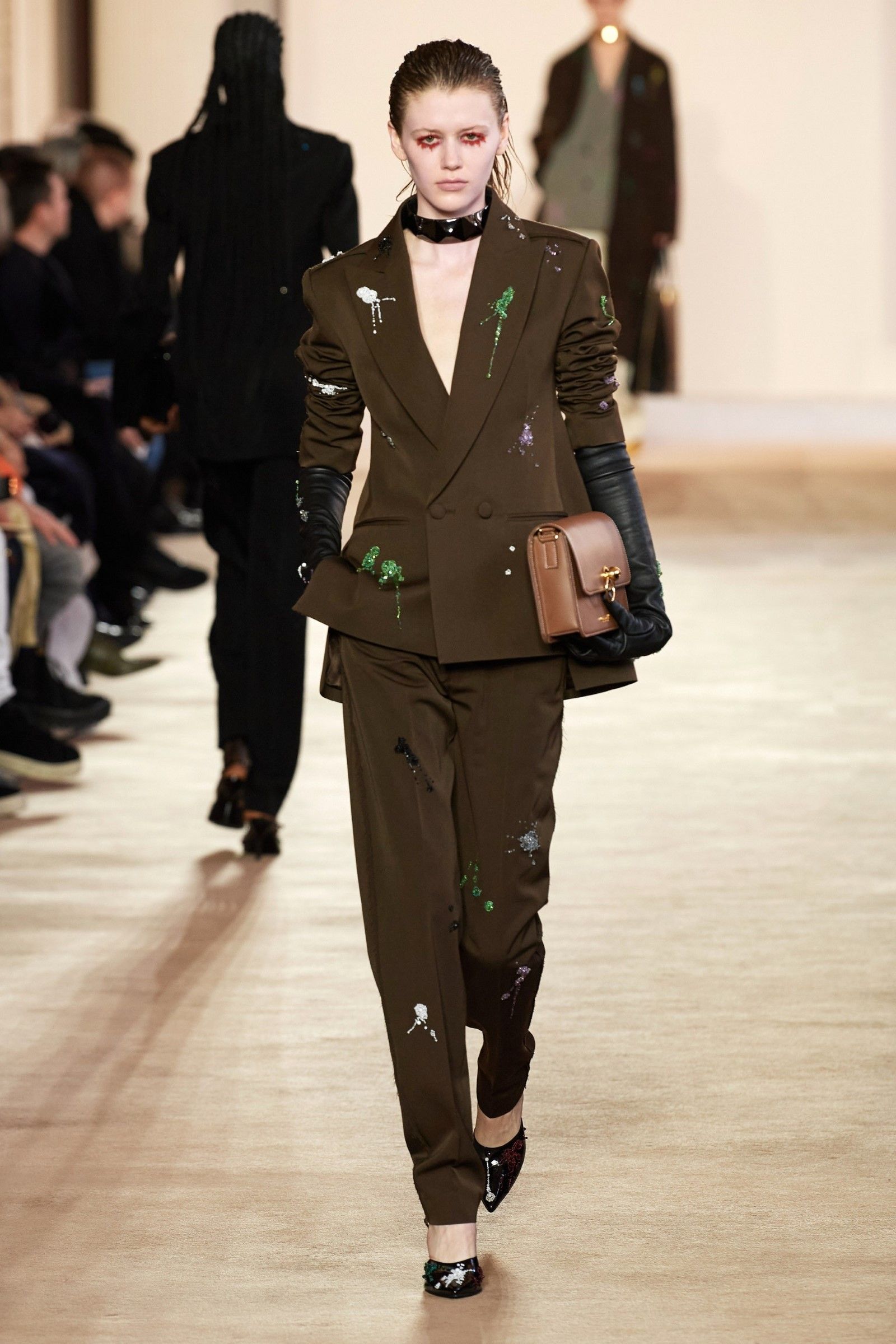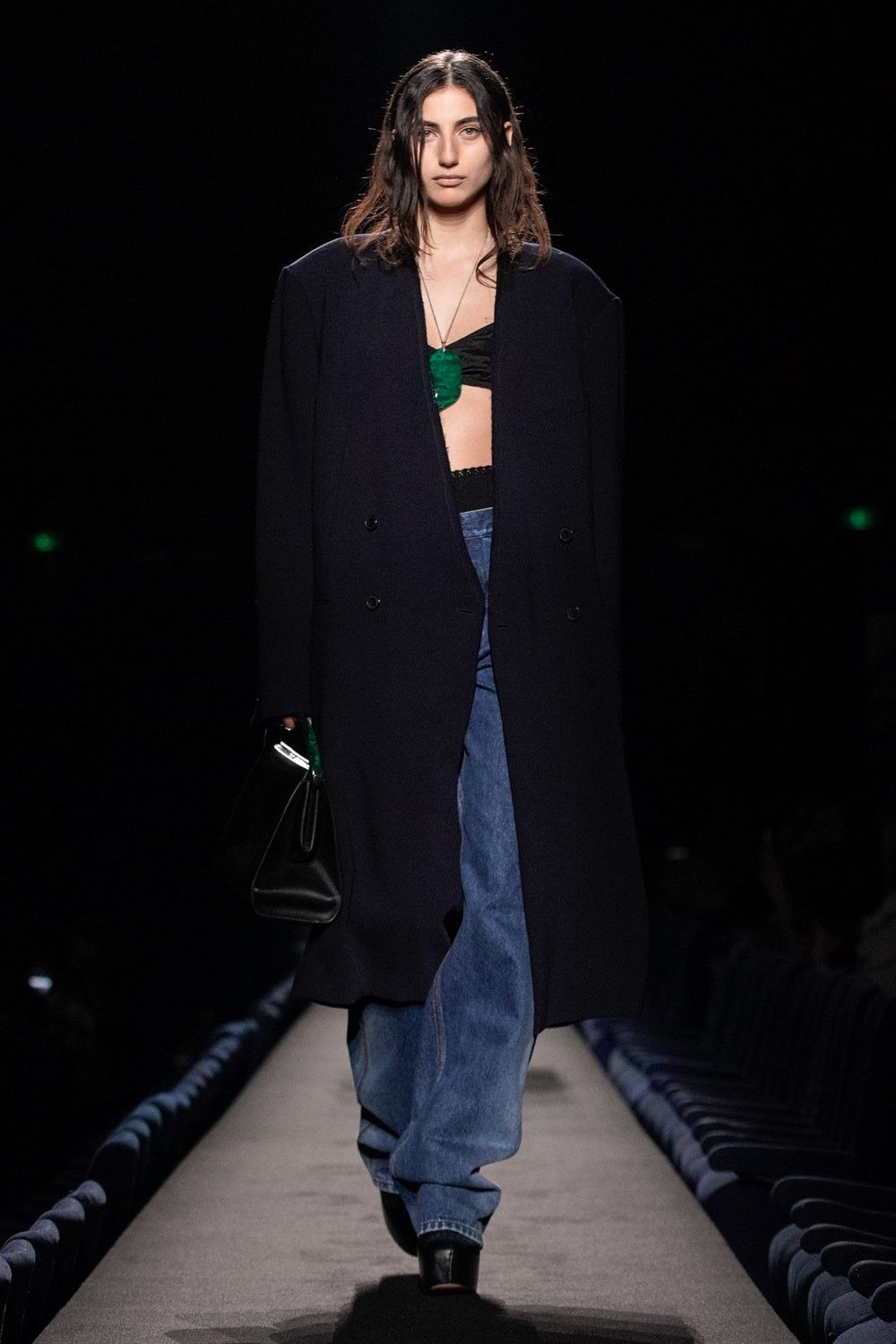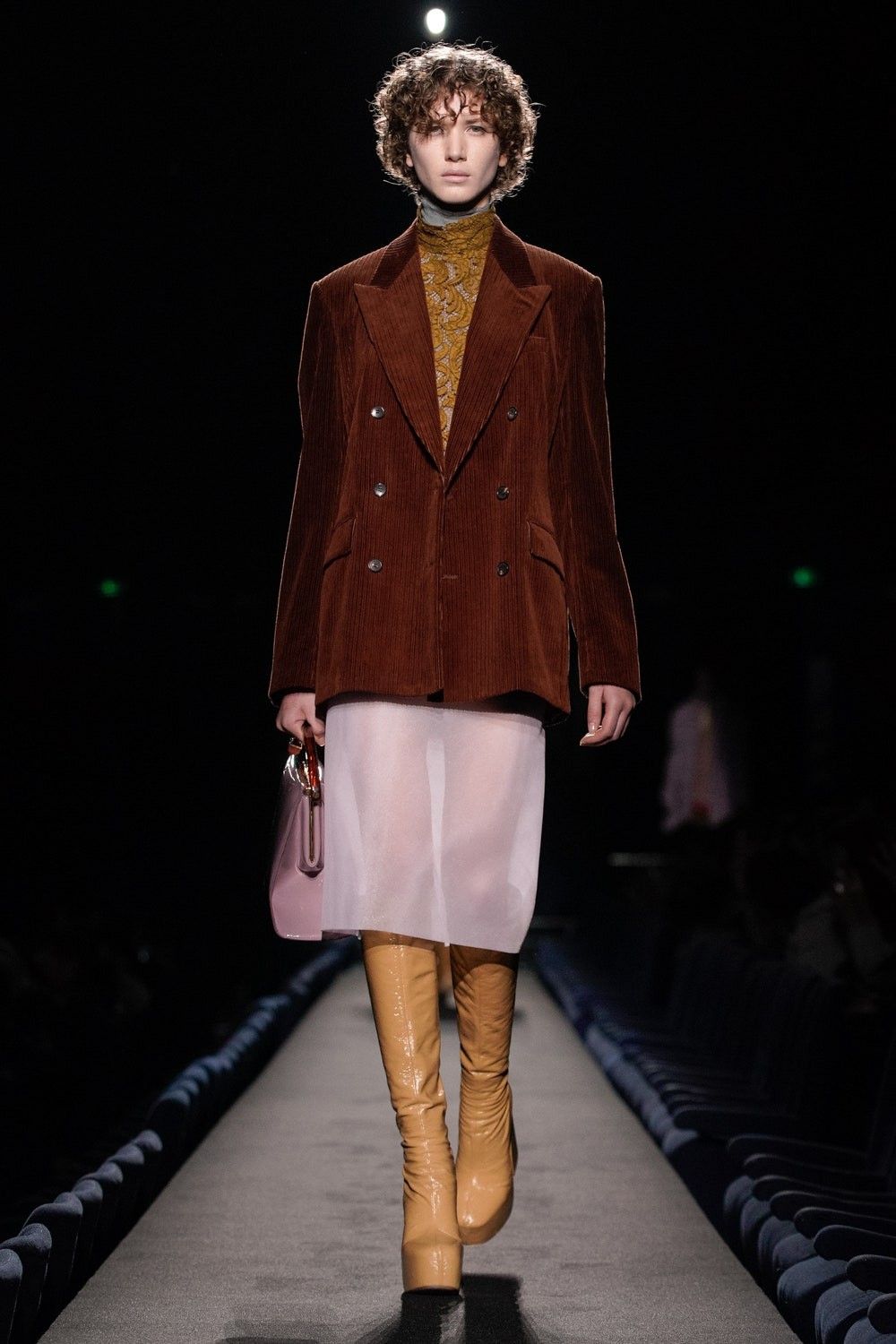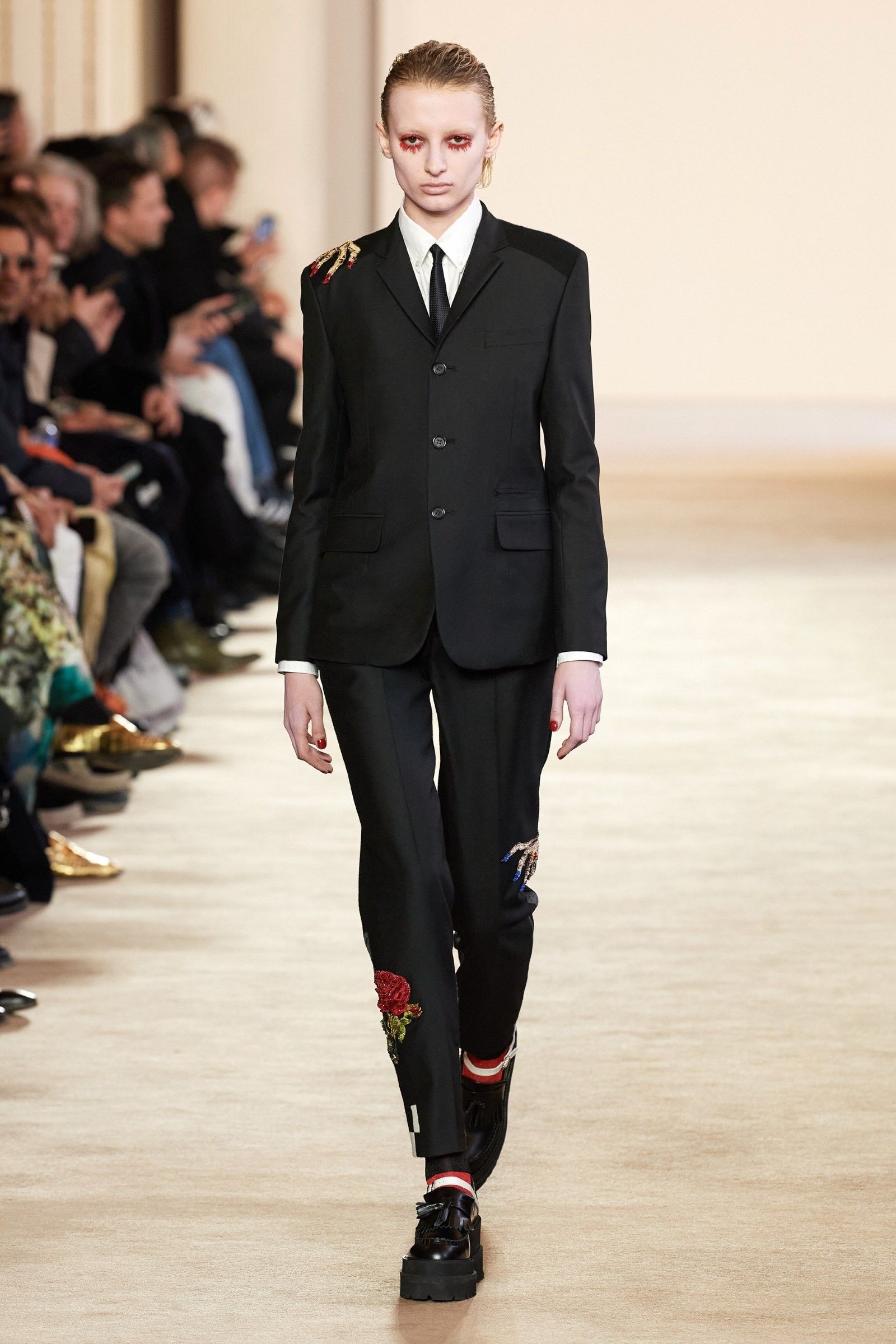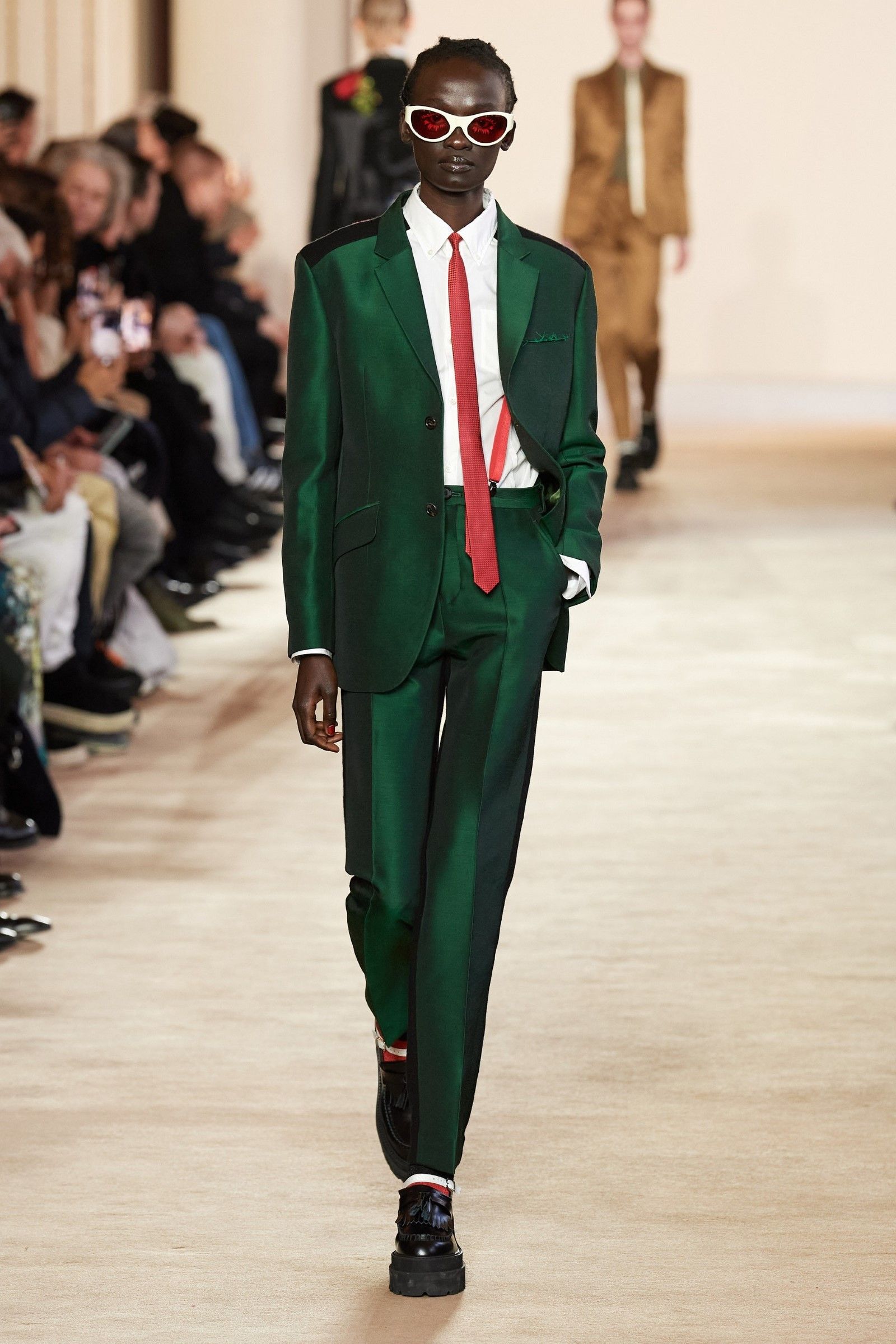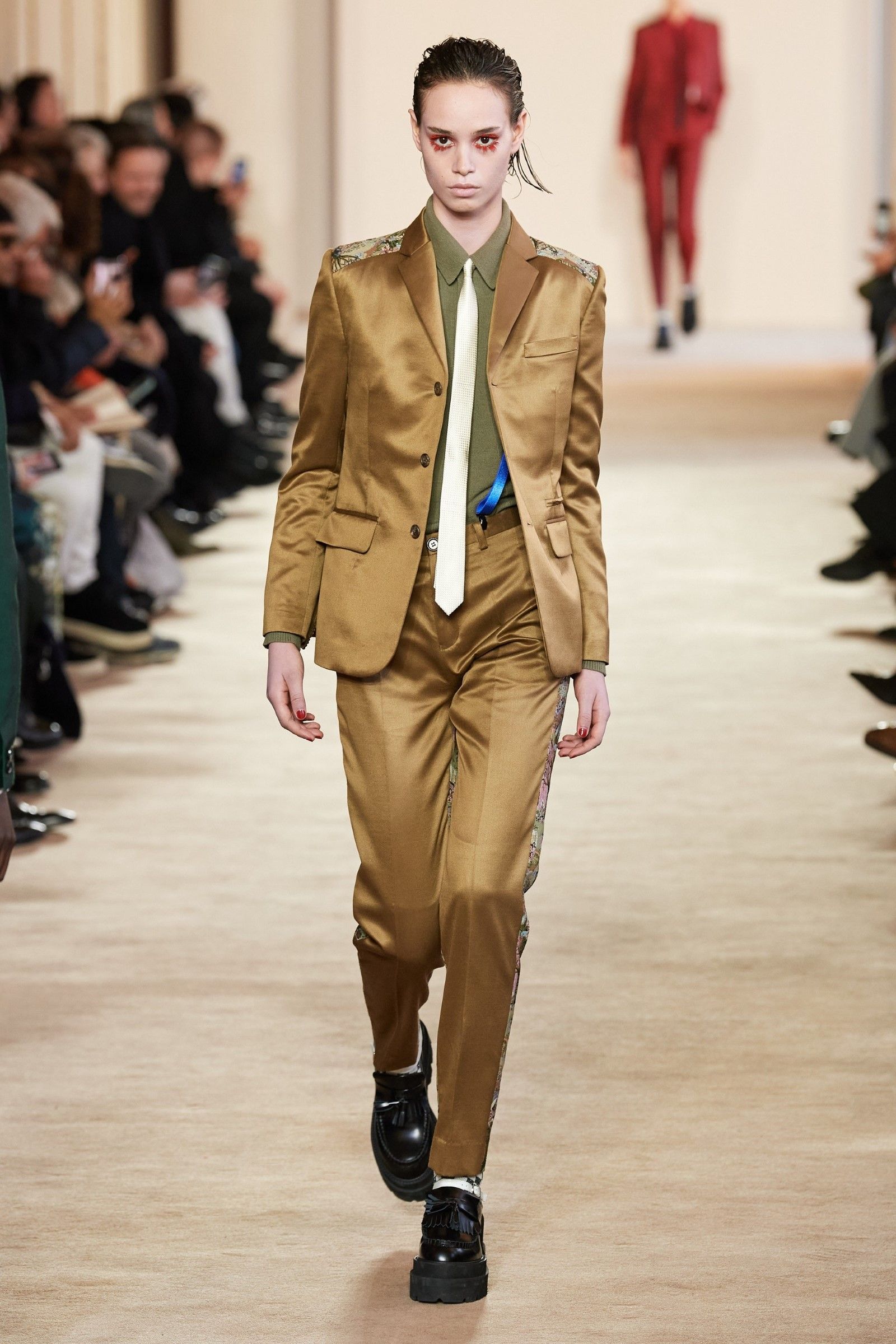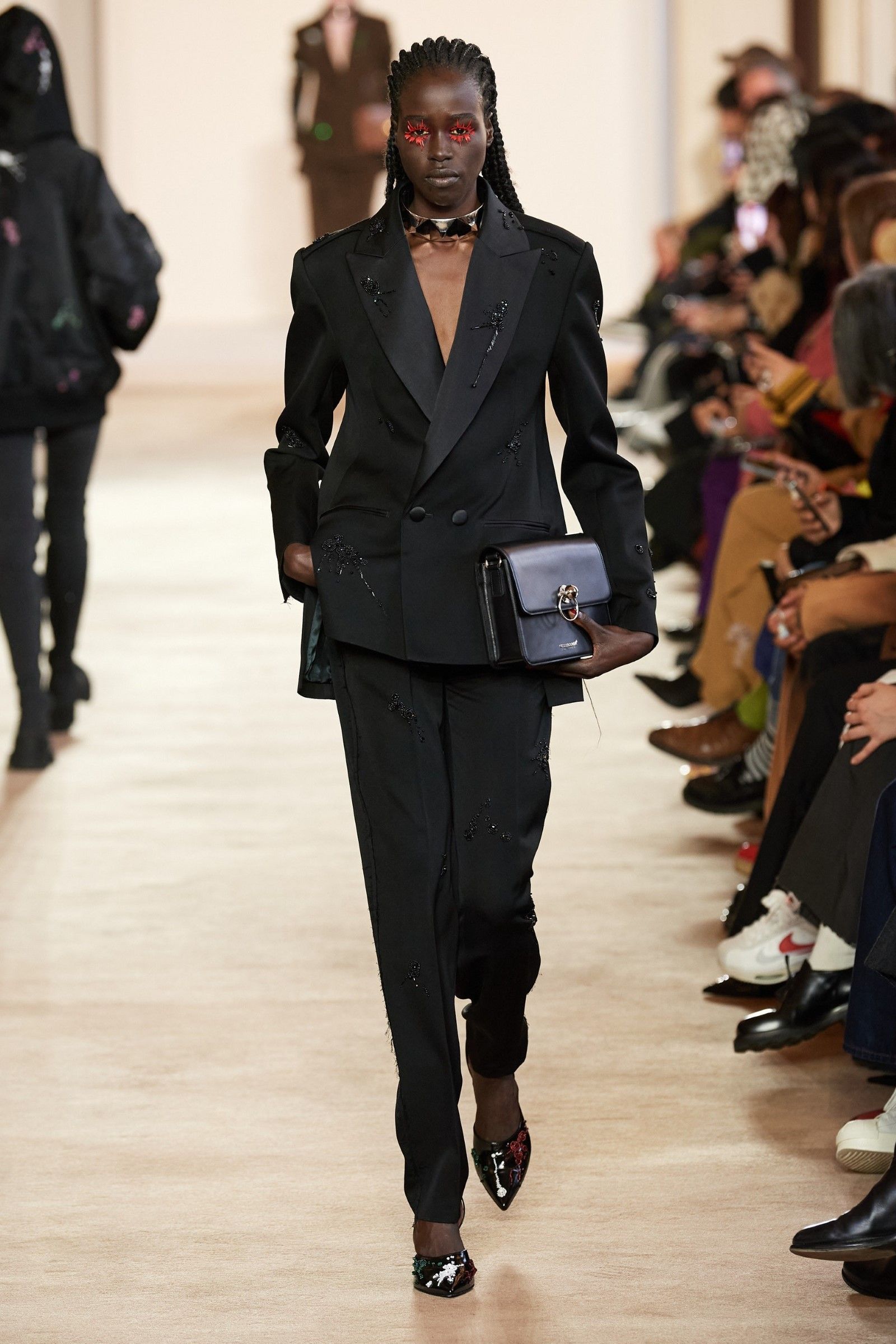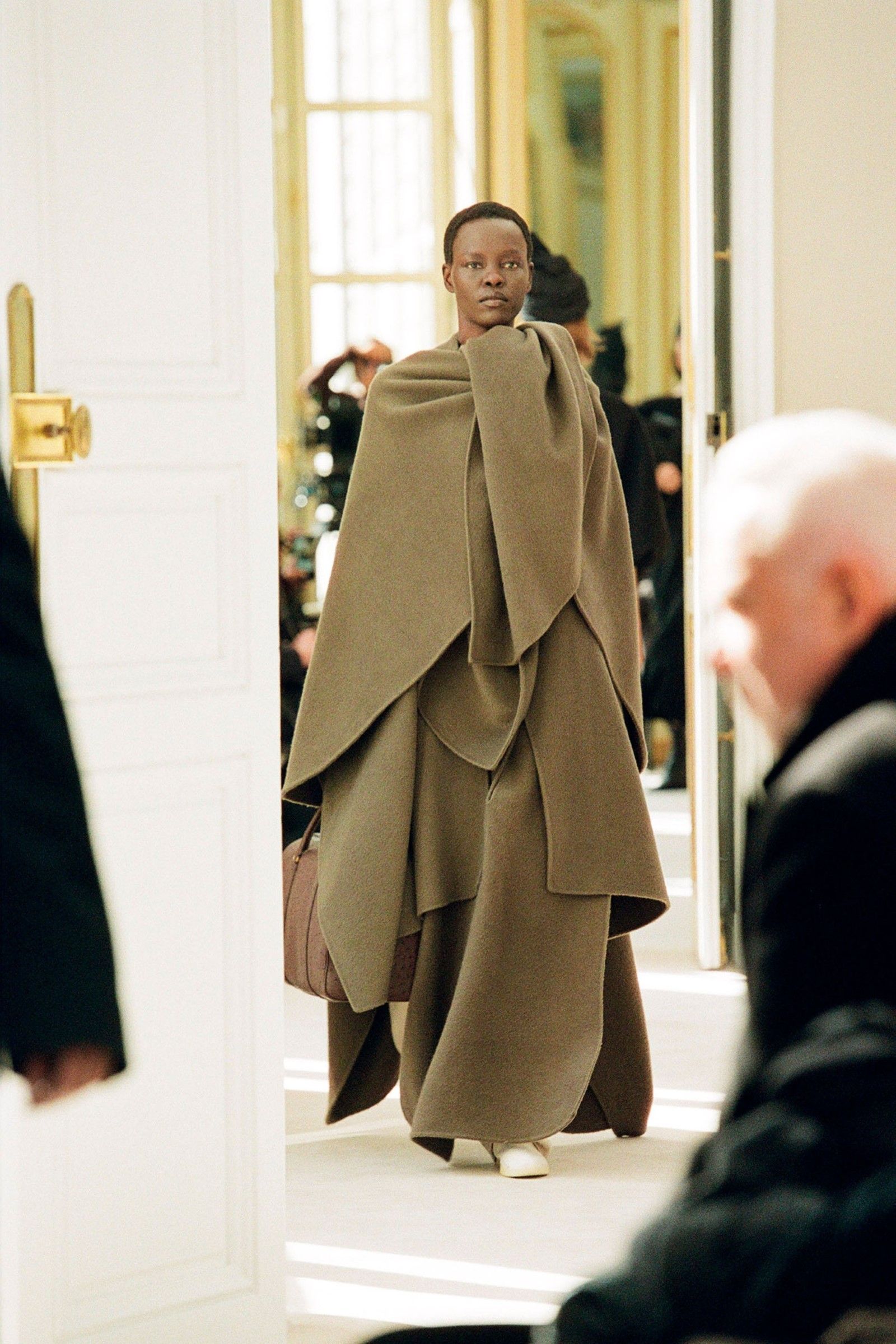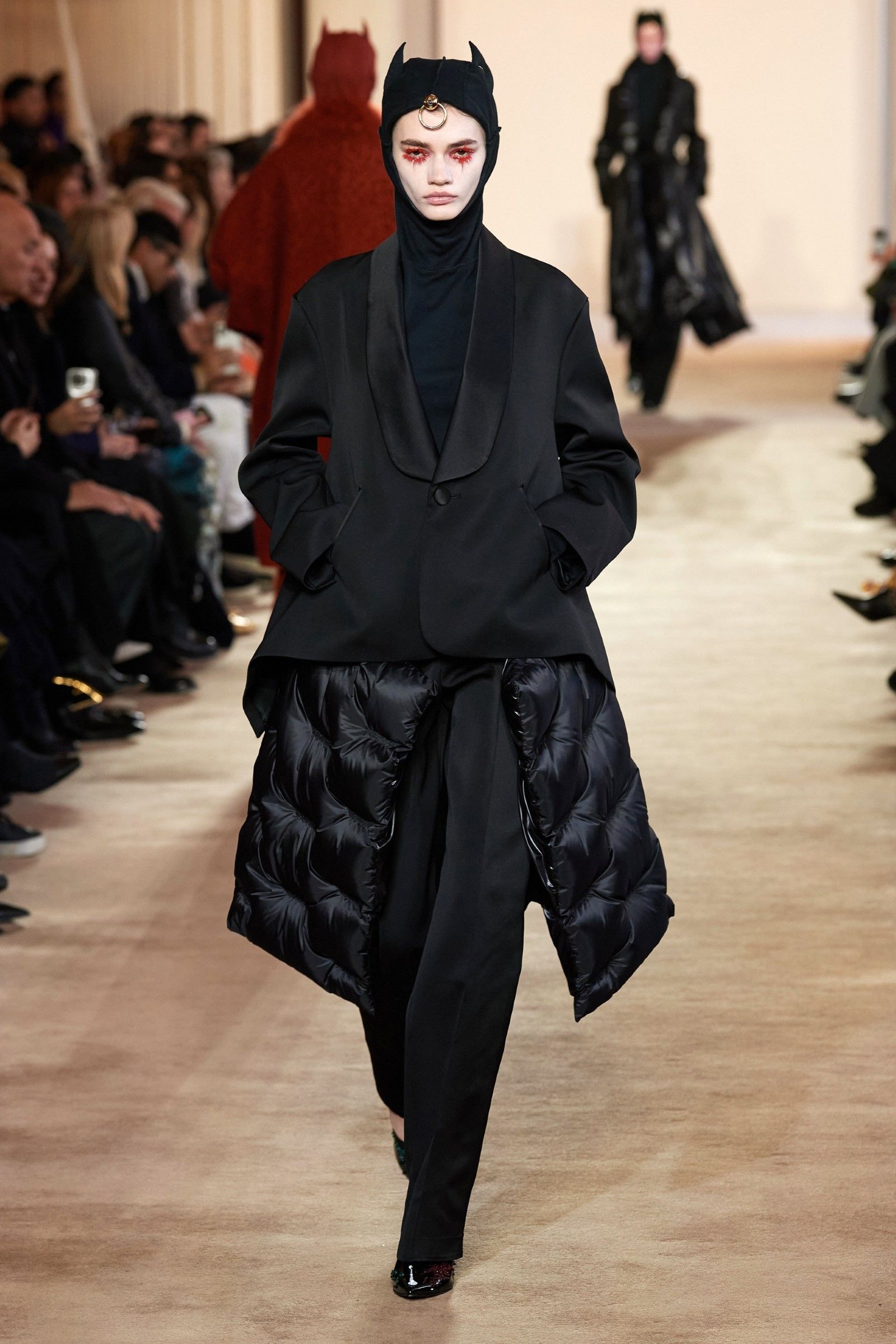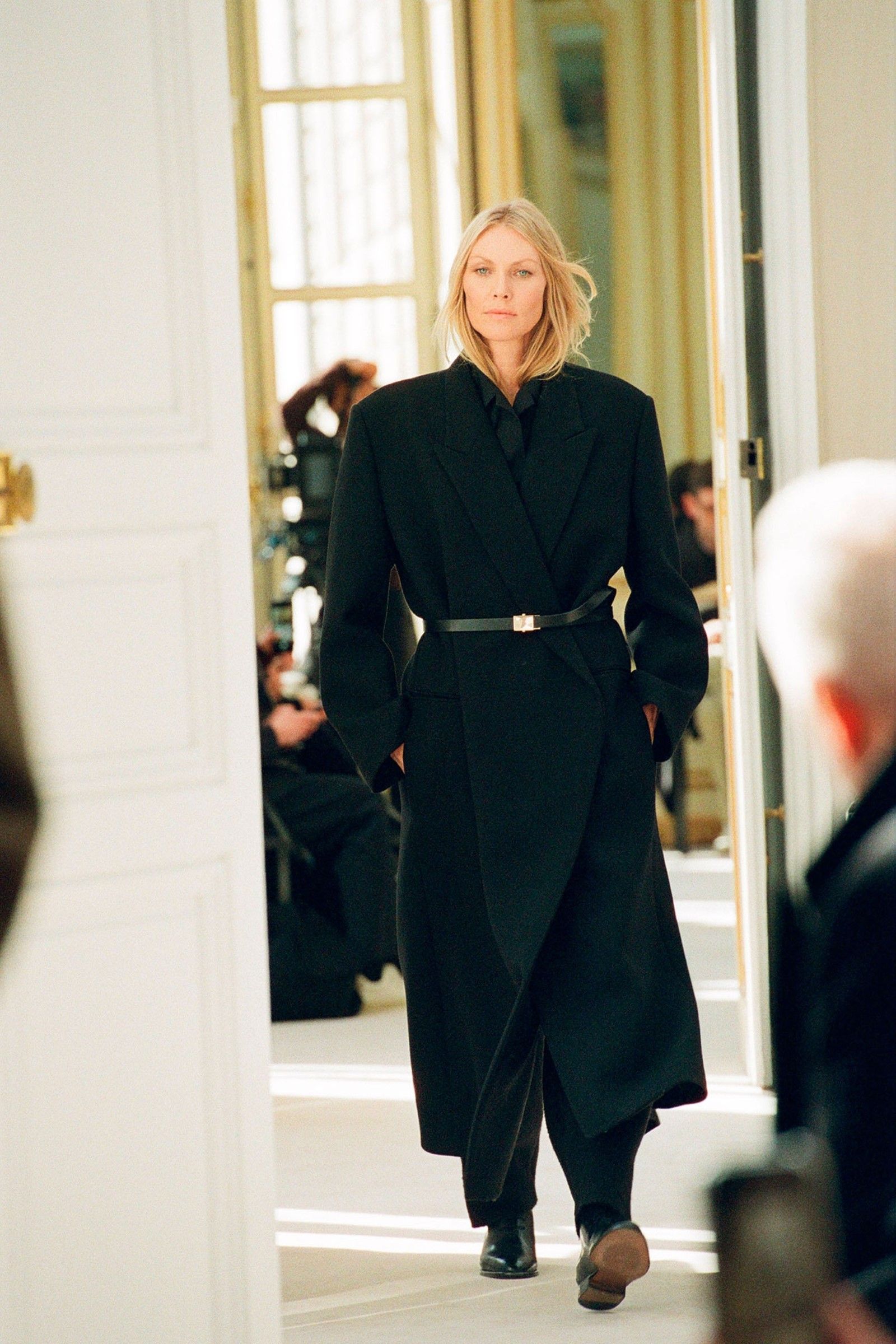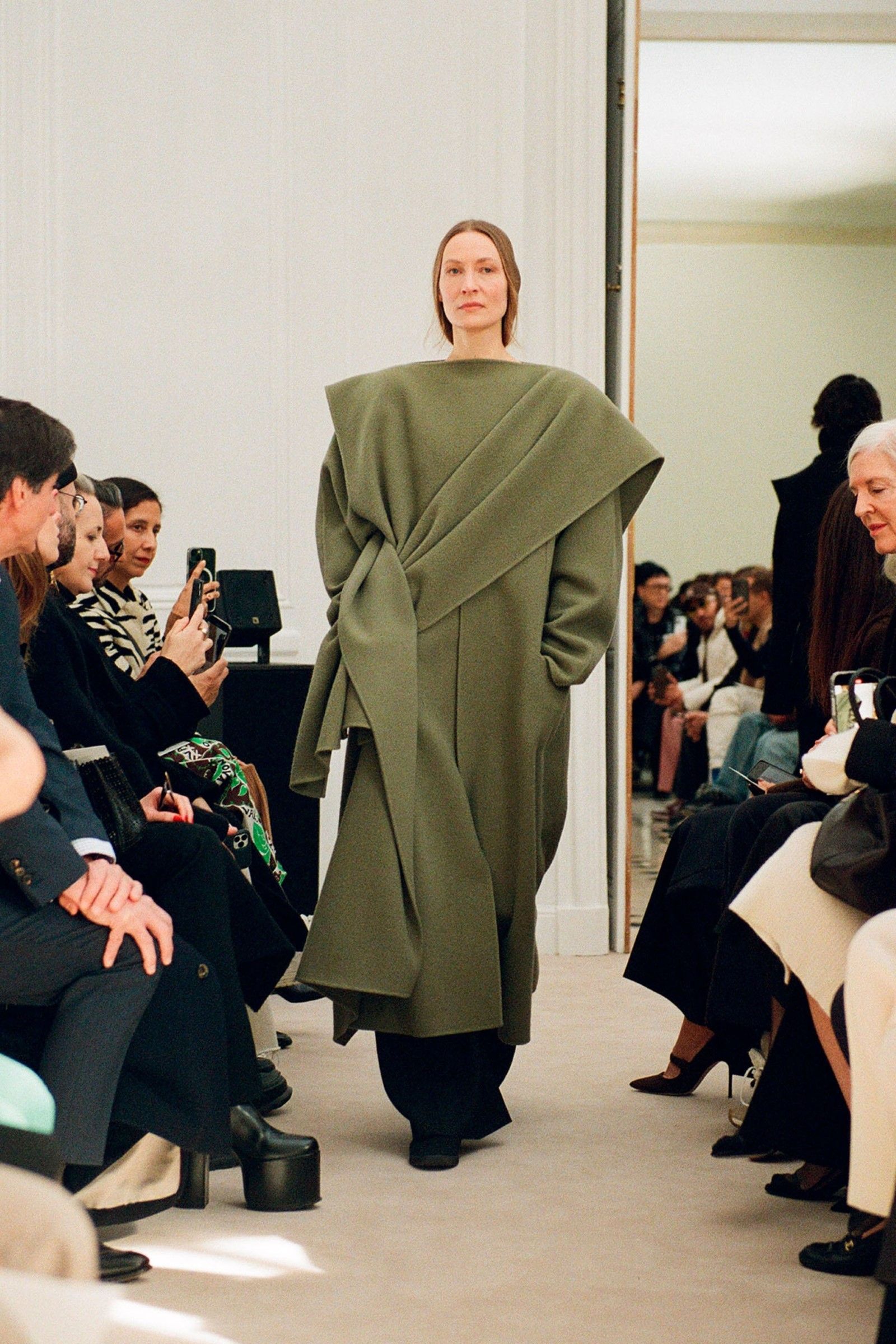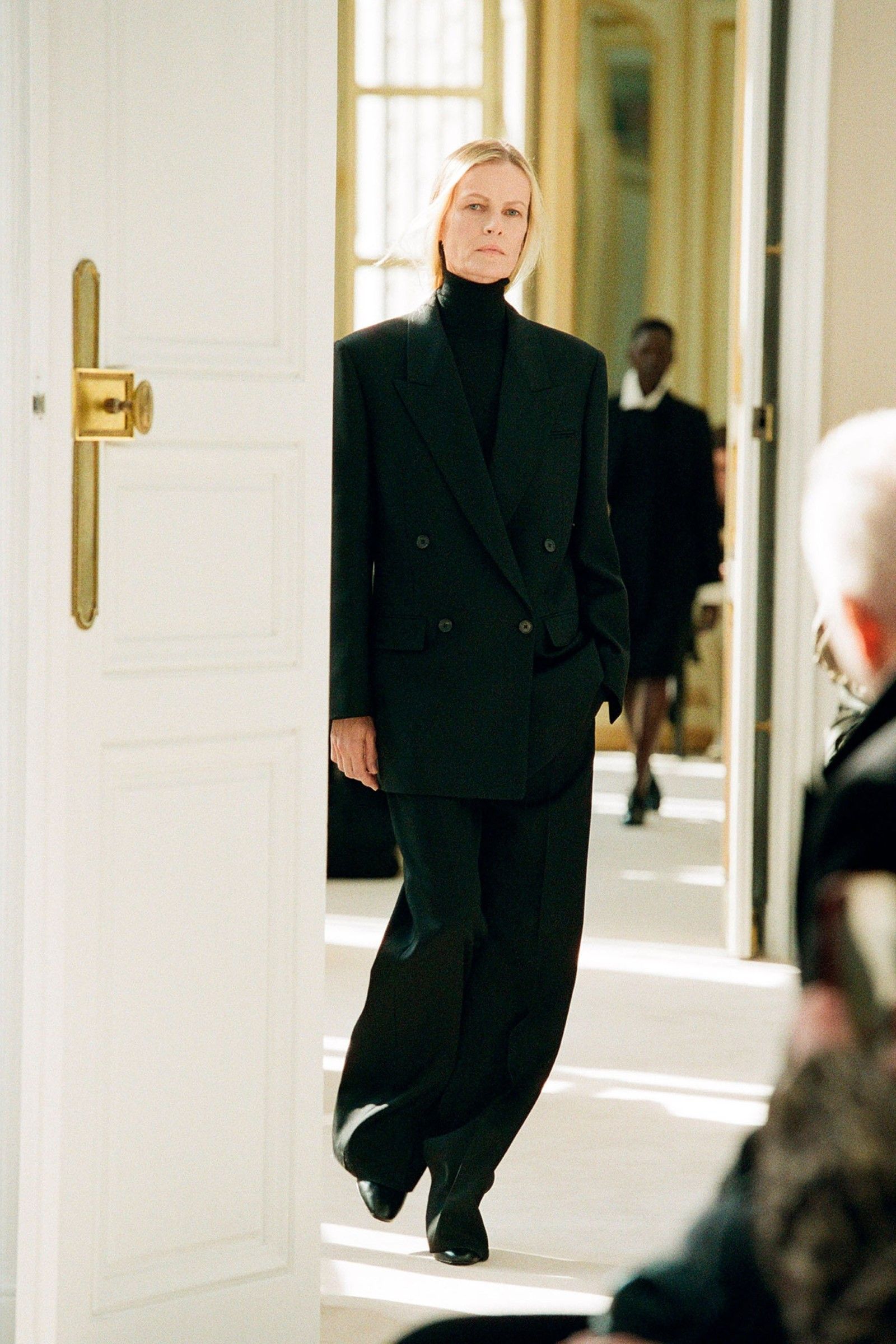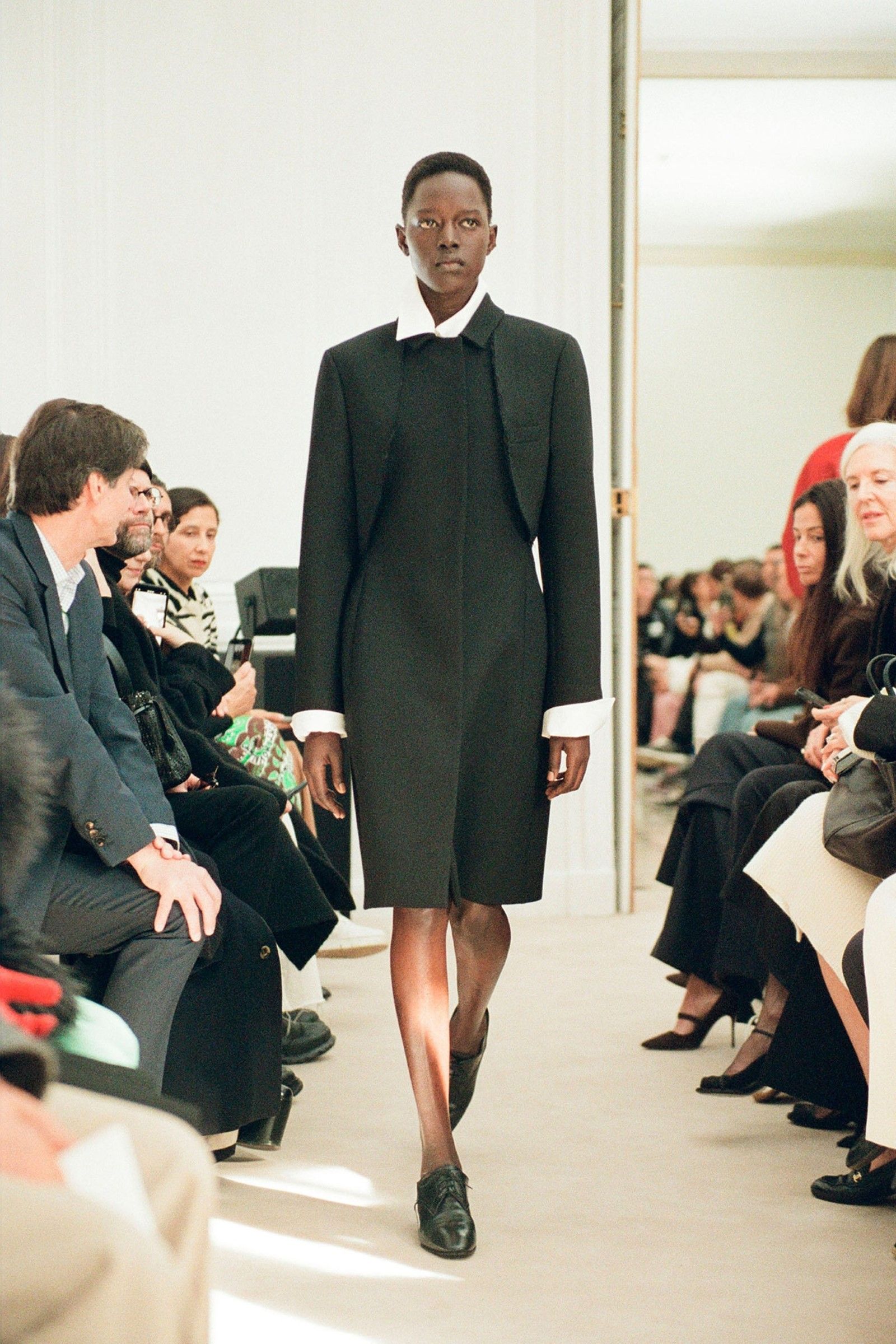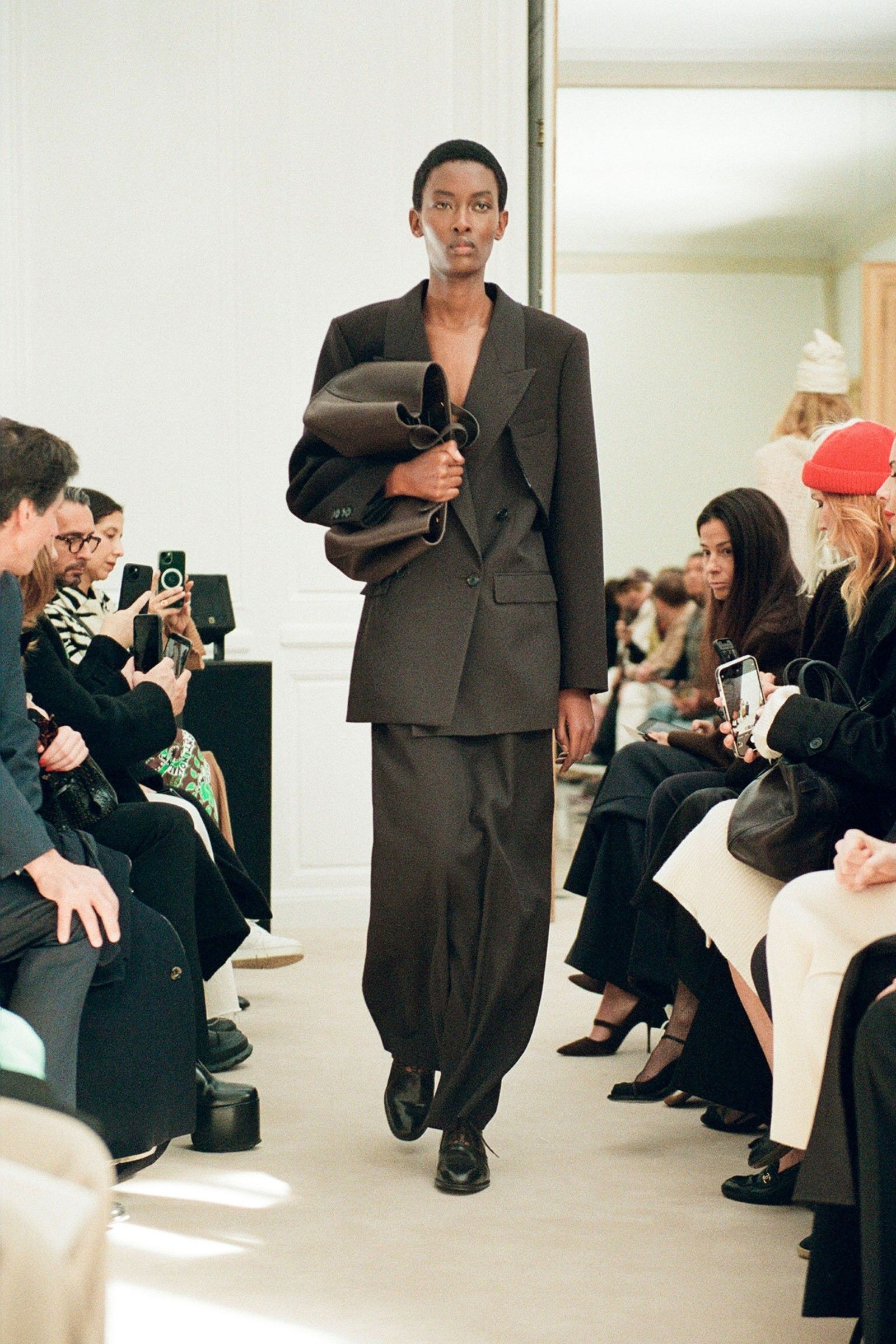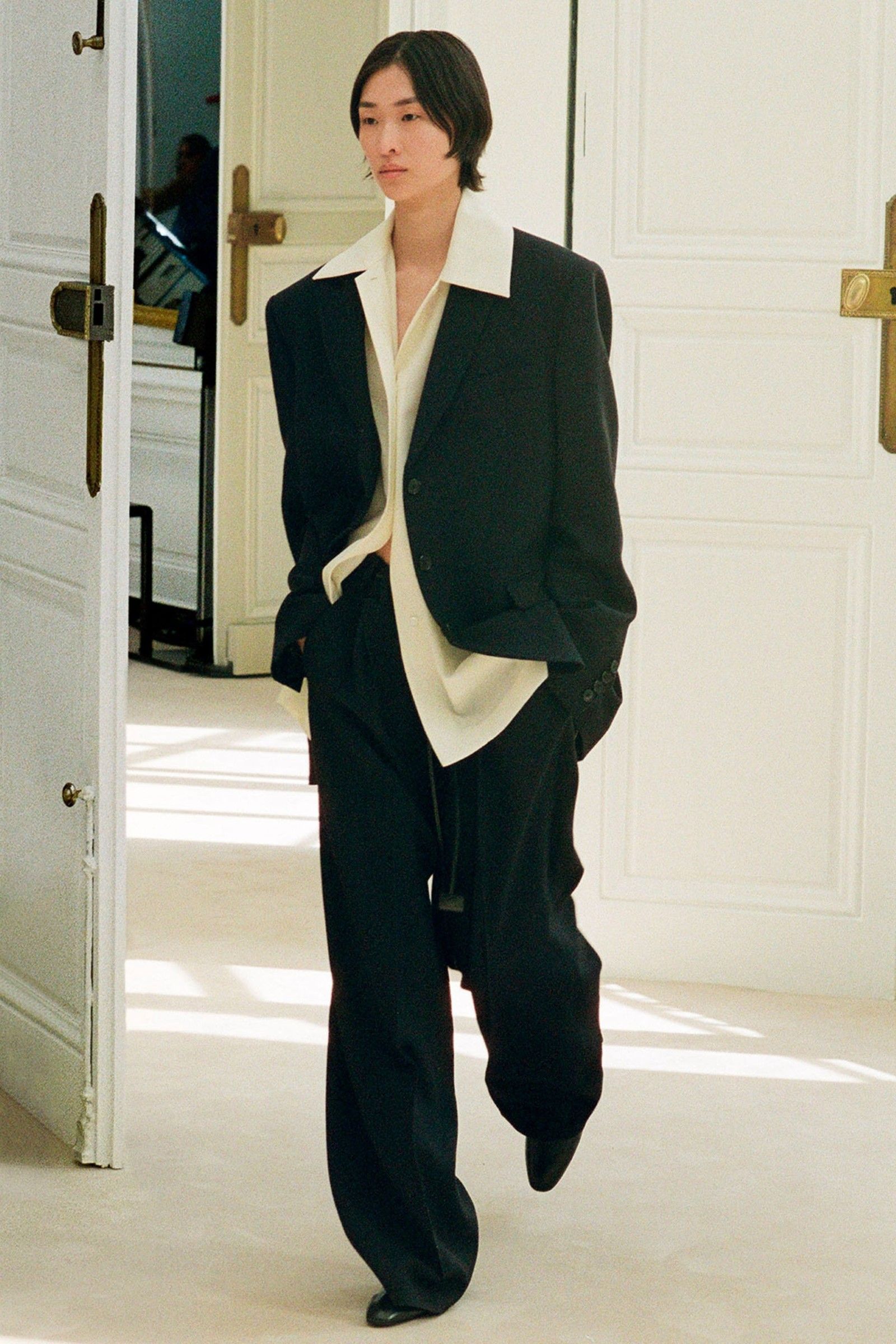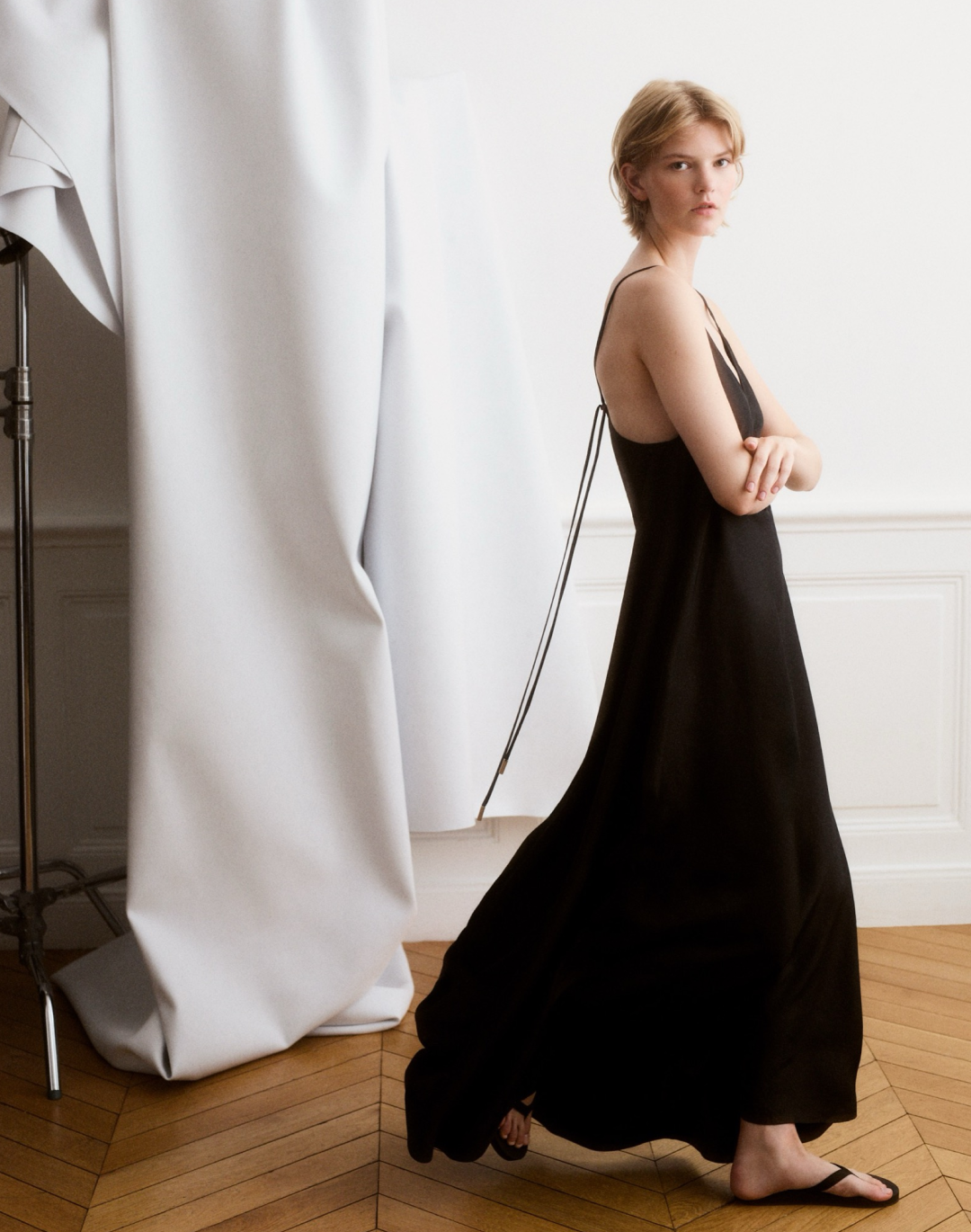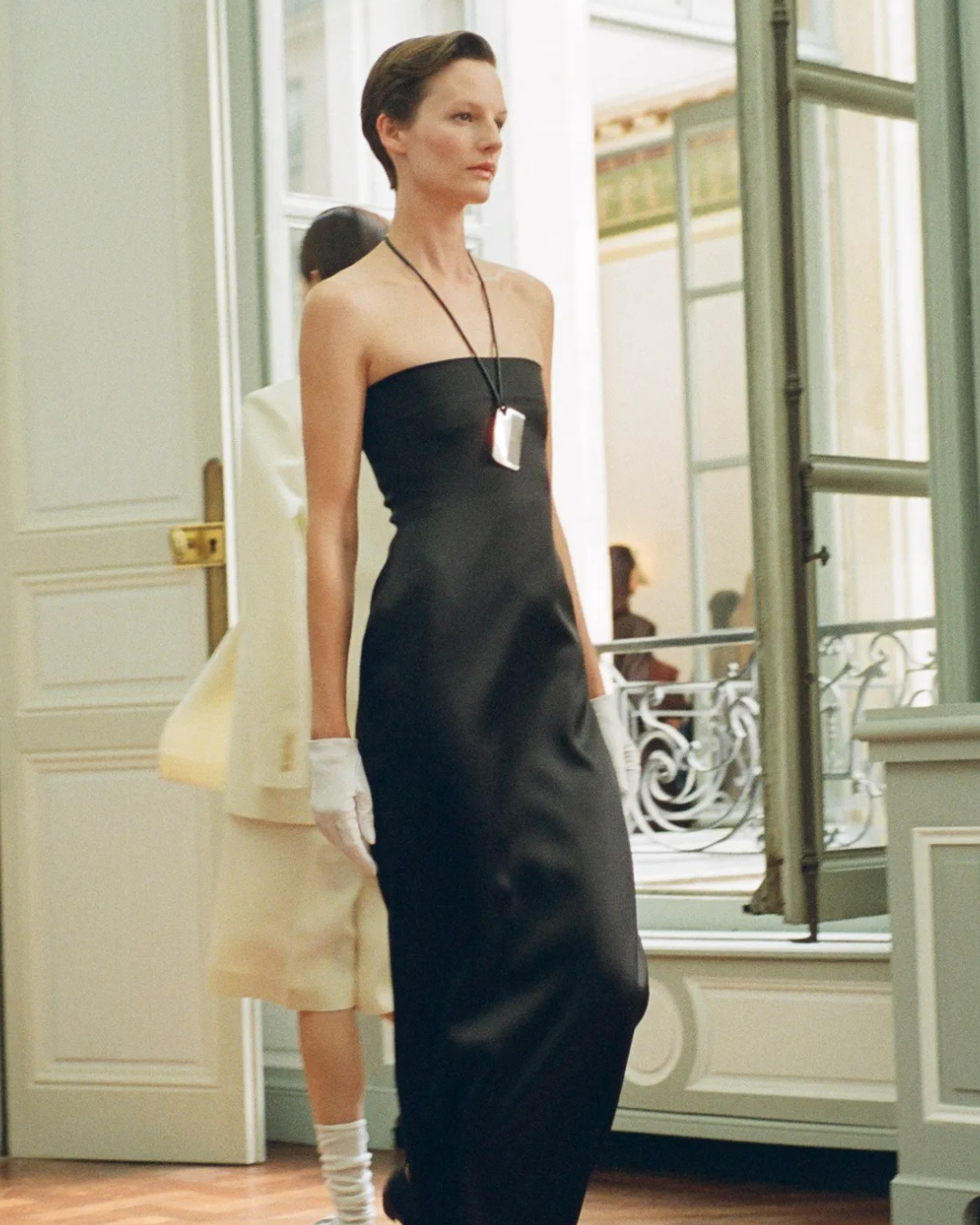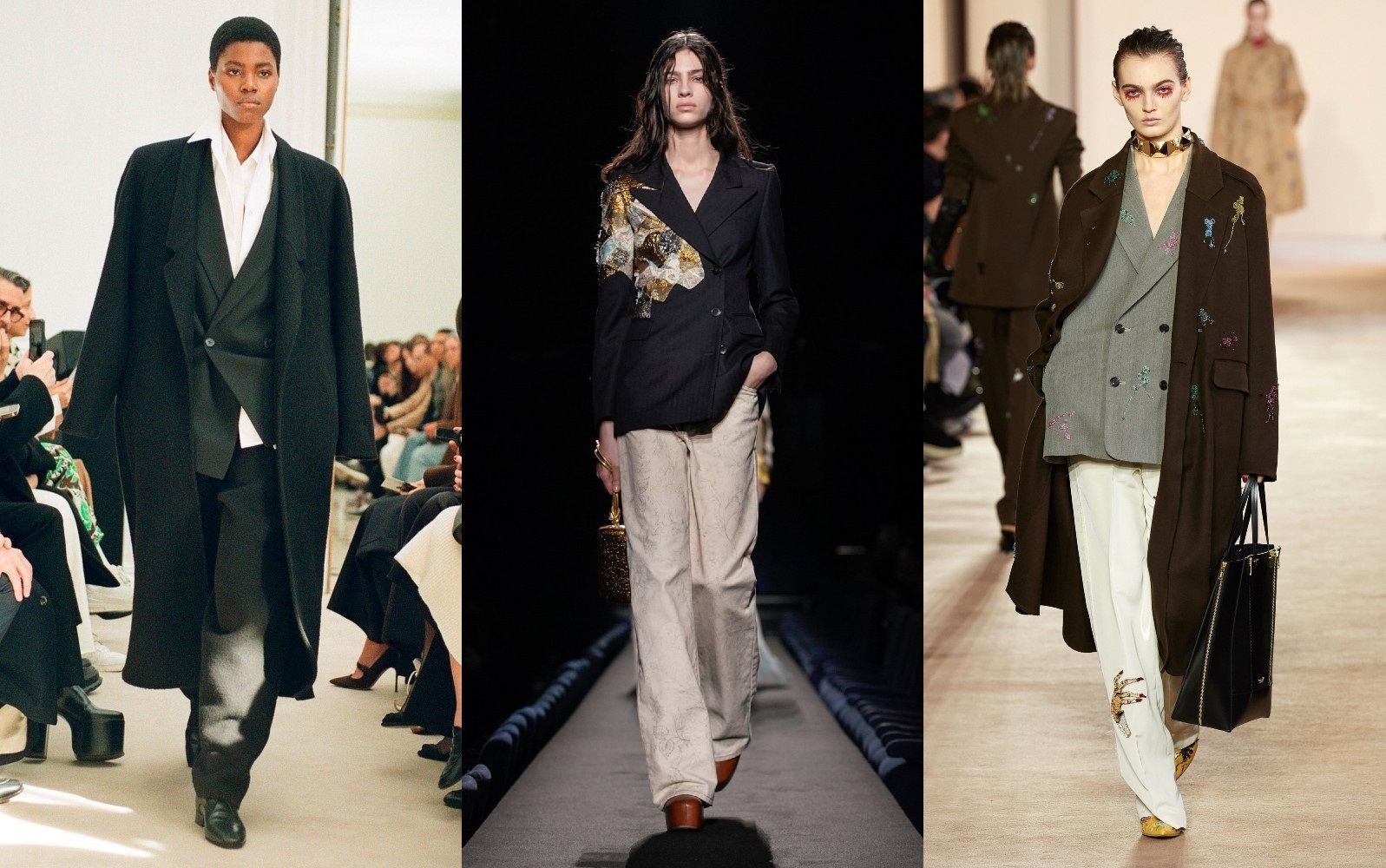
The expressionist tailoring of the Paris Fashion Week Jackets and pants become vehicles of emotion
When, during and after the lockdown, everyone believed that we would stay in suits forever, the idea of returning to the sartorial silhouette seemed as difficult as necessary. Tailoring, with all the culture surrounding it and from which it derives, seemed almost contrary to the times: its formality recalled a world of work from which we wanted to distance ourselves and its heteronormativity seemed obsolete. Yet, in the years since the two-year pandemic, tailoring has returned - its call to order, and its values of classicism have made it a creative frame of reference on which (in some cases literally) to embroider new ideas and also a foothold to cling to in a world where chaos seems to reign. Yesterday, in Paris, we noticed a new pattern: three cult brands, three collections, and three different interpretative concepts of the same sartorial discipline. Their shows were also back-to-back-the first The Row at noon, followed by Undercover and then Dries Van Noten. All three brands brought to the runway their idea of a tailoring that we might call expressionist, that is, in which the same elements of sartorial culture were read according to three subjective perspectives that distorted certain aspects of it to create reactions that were both aesthetic and emotional.
The Row opened the dances. Having become a kind of Uniqlo for billionaires in recent years, on par with another handful of mostly Italian brands like Loro Piana and Brunello Cucinelli, the Olsen brand has seen its sales grow immensely in recent years. Her shows are reserved, haughty, and almost aristocratic in their press silence, guests are offered refreshments as basic as they are elevated to the last degree of sophistication ranging from simple premium mineral water to Japanese tea to organic almond milk and hot chocolate - a reflection of a collection that, those who have seen it live, describe as almost unspeakable, impossible to explain unless you touch it with your own hands, the clothes are like fluid structures of fabrics of mythological softness. Even just looking at the looks represents a kind of luxury spa for the eyes. Oddly enough, the show's soundtrack was a live version of Bela Lugosi Is Dead by Bauhaus, an iconic song of the goth subculture that has already appeared in the movies in The Hunger, a film in which Catherine Deneuve is a vampire dressed in Saint Laurent - and actually with all the black in the collection might have even made sense. The song, rather than vampires, was a kind of hypnotic melody, accompanying a collection of tailoring where immoderation was artfully calculated, becoming opulent draping without adhering to the body's measurements but blessing out in the magnificence of almost anonymous fabrics. There is whimsy and there is abundance in the desire to accumulate and shape such neutral materials-but also that sense of patrician pride that comes from always standing out without ever being noticed, tailoring without severity. When a lively detail like a yellow glove seemed a touch of dandyism as well as a possible reference to the Victorian poet Robert Browning, who wore a pair as a personal style signature.
After so much sublimity, Jun Takahashi of Undercover plunged the audience into his multiverse of madness. His suits had the slickness and aggression of mods, embroidered with songs by The Specials and decorated with cover art by German composer Manuel Göttsching. Everywhere (and not only on the suits but also on the tulip skirts seen later) appeared embroidered hands that the rest of the press referred to as "evil witch hands" and "Grinch-like" but represented the most esoteric of references to the cover of a 1979 edition of Dracula published by Penguin Books - a callback so peregrine and seemingly random that it gives the measure of how cultured and chaotic together Undercover manages to be, to how familiar but different his outfits manage to be from any of their kind. Tuxedo jackets mixed with puffer jackets at the waist and a balaclava with horns, handbags decorated with spikes, suits that on the back were composed of entirely different fabrics and embroidery, rhinestone encrustations like alien moss - here were as much a world of effect and strong personal expression as a reflection of a chaotic world. In the chaos Takahashi is at ease - it was during the pandemic that his clothes had become more meditative and serene.
With these first two shows over, at three o'clock it was the turn of Dries Van Noten, who walked the runway at Le Dôme de Paris. Now, Van Noten is among the most revered masters of the Belgian school (but what Belgian or Antwerp-related designer isn't?) producing hits year after year. His shows don't shock because they don't want to shock, the technique is grand, the prints and colors unparalleled -and this year his imagination with avant-garde sympathies was applied to many classic tailoring within a collection whose concept was intimacy, the layering of strong and impalpable materials, the delicacy of gold embroidery that looked like precious repairs and mending on classic pieces. There were double-breasted jackets of rust-colored velvet, frayed lapels, and trouser cumbersomely heavy coats that lacked lapels, stiff suits whose jacket was worn over a top that looked like a turned-up lining with all their subtlety, their non-transparent comprehensibility, these clothes seemed beloved and familiar as if they had been recovered and worn after a long time without having lost any of their beauty. Every misplaced detail was artfully put there, fully visible only to the wearer. The idea was that of tailoring that, instead of protecting like armor or making itself a vehicle for edgy expressions and references, finds a strangely intimate relationship with the wearer - a feeling that was not revolutionary but flowed as freely as Lander Gyselinck's jazz that animated the venue.










































